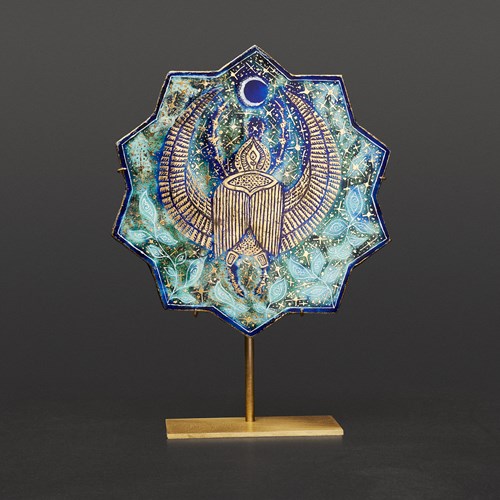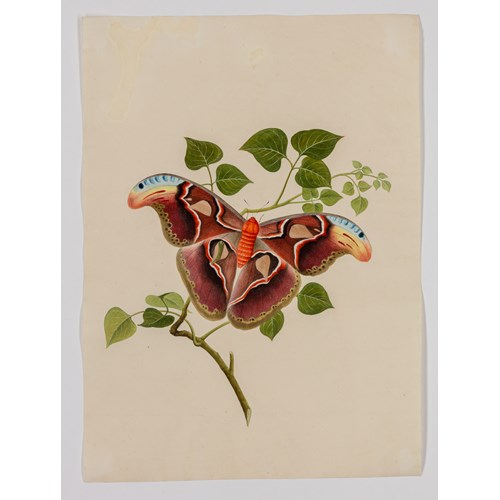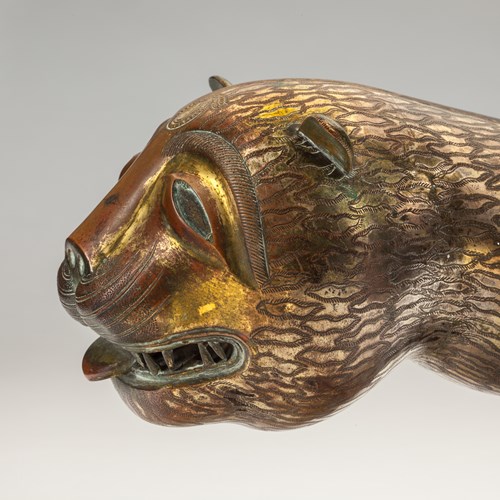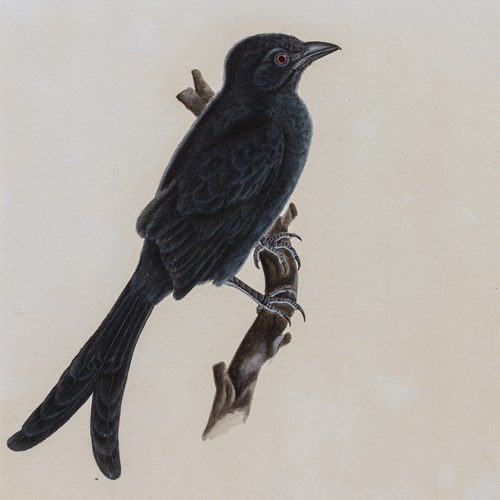Safavid Blue-and-White Bottle
Period 17th century
Origin Iran
Medium Ceramic decorated in underglaze cobalt blue
Dimension 36.5 x 21 cm (14³/₈ x 8¹/₄ inches)
Since the seventeenth century Safavid potters had aimed to imitate Chinese porcelain, especially once the Ming dynasty fell in 1644 and the imperial patronage of the Jingdezhen potteries diminished, severely disrupting the flow of the export trade. Hence, the production of chinoiserie blue-and-white objects in Iran filled the void in domestic markets and, to some extent, abroad, enabling patrons who could not obtain Chinese porcelain or access the Chinese porcelain market to own prestigious imitations.1
In the Victoria and Albert Museum in London there is a Safavid bottle with an almost identical depiction of the two seated figures, but only on one side of the object (Accession Number: 1245-1876);2 in addition, the motif of two seated figures also appear on a seventeenth century Safavid dish (Accession Number: 2721-1876).3
Period: 17th century
Origin: Iran
Medium: Ceramic decorated in underglaze cobalt blue
Dimension: 36.5 x 21 cm (14³/₈ x 8¹/₄ inches)
Provenance:
Exhibition: Footnotes:
1 Lisa Golombek and Eileen Reilly. 2013. “Safavid Society and the Ceramic Industry”. In Persian Pottery in the First Global Age: The Sixteenth and Seventeenth Centuries, edited by Lisa Golombek, 13-56. Leiden: Brill. p.22.
2 See also, Yolande Crowe. 2002. Persia and China: Safavid Blue and White Ceramics in the Victoria and Albert Museum 1501-1738. Geneva: La Borie. p.151, no. 236.
3 Ibid. p.115.
More artworks from the Gallery









